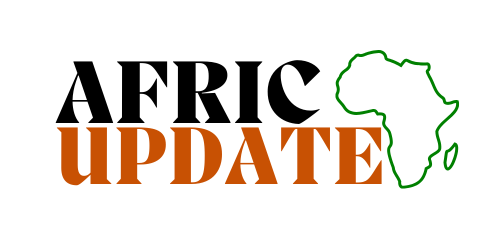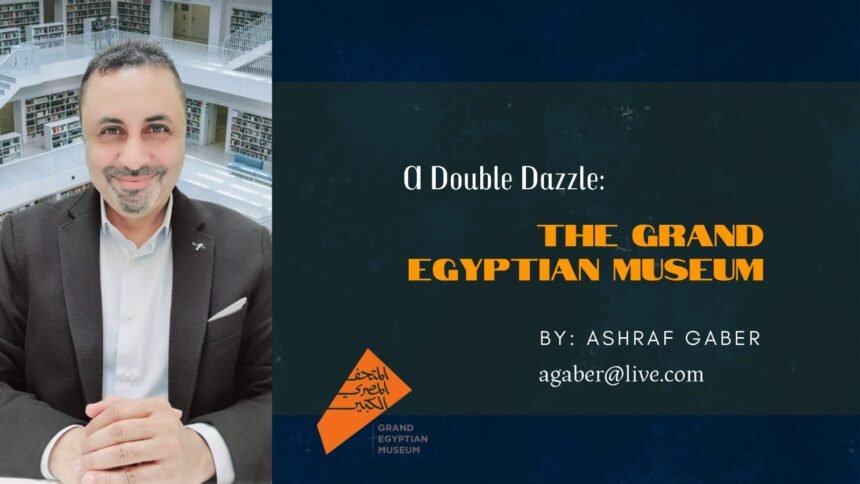Cairo: AfricUpdate – News Desk
By: Ashraf Gaber
The inauguration of the Grand Egyptian Museum was not merely a cultural event centered around the world’s most dazzling civilization, it became a breathtaking digital spectacle, redefining the relationship between technology and heritage. The largest archaeological site on Earth (land and sky alike) was transformed into a living interactive showcase that ties Egypt’s legacy to a smart future.
TheMuseum: An Unrivaled Monument and Eternal Value The Grand Egyptian Museum (universally abbreviated as GEM), whose dazzling opening welcomed kings, presidents, and distinguished leaders from across the globe as guests of Egypt and its president Abdel Fattah El Sisi, is the largest archaeological museum worldwide.
It houses more than 100,000 artifacts spanning seven millennia of Egypt’s history, including the complete treasures of the Golden King Tutankhamun, the unique Hanging Obelisk, and the famed Khufu solar boats. Its majestic architecture and grand façade, punctuated by the “Great Staircase” lined with ancient Egyptian kings, leave every visit an unforgettable journey across eras and meanings.
From Visual Splendor to Digital Interaction: The Opening Unleashed
The opening was an extraordinary celebration, rivaled only by a handful of the world’s grandest events: a crowd orchestrated with hive-like precision, a truly global audience, and a live multilingual broadcast that reached over a billion viewers (according to Egypt’s State Information Service) via digital platforms and partnerships with TikTok and more. This was not merely the launch of a museum, but an introduction to a digital world, especially resonant among younger generations. Nor was the spectacle limited to live broadcasting.
Artificial intelligence merged with design, spawning a social phenomenon of AI-generated avatars depicting visitors as ancient Egyptian royalty. Celebrities and guests expressed pride in their heritage through campaign hashtags such as #GrandEgyptianMuseum and #IAmPharaonic, while the festivities kicked off with iconic papyrus-inspired invitations and golden graphics reminiscent of Tutankhamun’s sarcophagus.
Digital solutions were not superficial embellishments; they revolutionized the event’s very vocabulary. Giant 3D screens, augmented reality experiences animating ancient artifacts, instant multilingual translations, and the fusion of interactive 3D content with live reality turned attendees into participants، no longer passive observers but living storytellers. Scenes of image-to-pharaoh digital apps and immersive VR journeys into Egypt’s heritage exemplified the blending of authenticity with innovation. Notably, a cutting-edge digital control system orchestrated more than 5,000 drones with flawless precision, painting the sky with scenes, images, and key artifacts.
Digital management turned this occasion into a beacon highlighting the scientific dimension of Egypt’s ancient heritage, and that the “New Republic” continuously reinforces science as a guiding light for the country’s path to the future.
A Museum Elevating Visitors with Smart Solutions
The museum has harnessed digital transformation to elevate the visitor experience on every level:
• Fully online ticketing systems
• Smart crowd tracking for comfort and safety
• A digital infrastructure comprised of high-speed networks and IoT-based systems, integrating lighting, security, monitoring, and climate control in a unified smart network
• The implementation of augmented and virtual reality for artifact displays, granting each visitor an immersive narrative with a single touch or an interactive gesture
For digital visitors, the official website offers AI-powered virtual tours, 3D exploration of artifacts with rigorous scientific documentation, and interactive content matching global museum accessibility standards.
A Digital Bridge to the Future
The museum has successfully established itself as a smart bridge connecting ancient Egypt to today’s world, leveraging social platform partnerships, the full integration of AI tools, and a commitment to the idea that culture does not merely reside in the past, but continuously reinvents its living language. Thus, the museum has not only changed perceptions of what a museum can be, but reshaped how Egyptians see their country, and how the world sees Egypt itself: an institution breathing digital heritage and narrating the future.
Ashraf Gaber – Publisher & Editor-in-Chief
agaber@live.com




